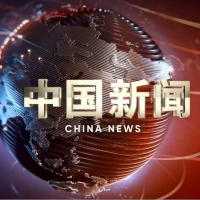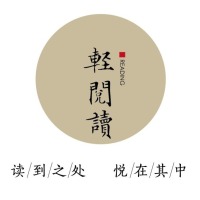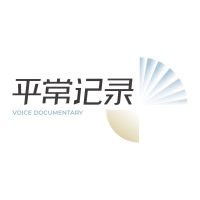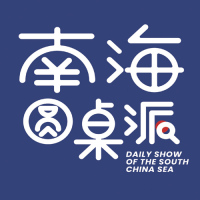Philippine expert: Is PH the next US ammunition hub?
Is it Subic Bay or Subic Base? Is there a resurgence of the United States’ strategic footprint in the Philippines today? These questions deserve critical reflection.
The US House Appropriations Committee (defense subcommittee) has quietly inserted a proposal into the fiscal year 2026 defense budget: the establishment of an ammunition manufacturing and storage facility at Subic Bay, once the crown jewel of America’s Pacific military empire. Framed as part of the US Indo-Pacific Ammunition Manufacturing Strategy, this project would revive America’s forward-deployed logistics capabilities in Asia by producing and stockpiling munitions, including key explosive chemical precursors like nitroglycerin and nitrocellulose, right on Philippine soil.
According to US officials, the facility would address supply chain vulnerabilities and reduce reliance on distant continental logistics during possible regional contingencies. To the critical eyes attuned to history, sovereignty and geopolitics, this proposal is less about peace and more about preparation for war.
Defense Secretary Gilberto Teodoro Jr. has stated that, although no formal proposal has been presented to him, the Philippines remains open to such a proposal. But the imperative question is: at what cost, and for whose strategic benefit?

(Philippine Defense Secretary Gilberto Teodoro Jr. gestures during his speech at an international military conference organized by the U.S. Indo-Pacific Command on August 27, 2024. /CFP)
From sovereignty to subservience?
President Ferdinand Marcos Jr. often touts the dawn of a “Bagong Pilipinas” or a “New Philippines.” But are we to believe that this new beginning is defined by rehashing the colonial playbook of the past, this time by hosting foreign munitions factories aside from the nine EDCA-US bases, rotational US boots on the ground and deployed missile systems? Is the Philippines no longer a supposed partner, but has transitioned into a pawn or a proxy?
Let’s not pretend, the Philippines is already effectively a forward operating site for US strategic projection in Asia. With EDCA sites sprawling across Luzon and Palawan, enhanced defense cooperation agreements multiplying and extensive multilateral military exercises deepening and being conducted near sensitive areas like the South China Sea (SCS) and the Taiwan Strait, is it correct to think that the country is functionally already part of the US Indo-Pacific force structure?
Note that a US ammunition plant is not merely another cooperative activity. It is an act of permanent entrenchment. It turns the Philippines from a staging area into a manufacturing node for the US military-industrial complex (the “deep state”). Today it’s bullets. Tomorrow missiles? Satellites? Drones? And when conflict erupts, what then? Subic is no longer just a dock; it’s a target. We should be mindful that every barrel of gunpowder mixed on our land might light the fuse that completely burns away our sovereignty, independence and our very survival as a country and as a people.
Strategic autonomy or strategic capture?
Memories of Subic and Clark’s colonial legacy still haunt the national psyche. Many Filipinos rejected the US military bases in 1991 precisely to reclaim independence and sovereignty. Yet here we are once again, with a proposed US ammunition plant that presents not only constitutional and sovereignty dilemmas but also profound geopolitical consequences and risks that we, as a nation, should not dare ignore. Is this not a betrayal of that hard-fought principle?
Embedding a US munitions factory tightens Manila’s alignment with Washington, diluting its constitutional mandate for an “independent foreign policy.” As strategic flexibility and autonomy fade, so, too, does the Philippines’ ability to mediate or hedge between major powers. Also, Subic’s transformation into a logistical arm of US power could render it a prime target, a bullseye, in any contingency or a shooting war involving the SCS or Taiwan Strait. Hence, a caveat: a factory that feeds war attracts war, and innocent Filipinos could pay the price.
Furthermore, hosting a US arms factory might be perceived as a provocation by the US’ perceived adversaries, which in turn could result in economic blowback, leading to economic retaliation, stalled projects, reduced tourism and tightened trade restrictions. Just ask South Korea after it installed the US THAAD missile system.
Moreover, a foreign-linked military facility sends a clear signal that the Philippines is undermining Asean centrality and bypassing Asean’s regional security architecture in favor of bloc politics. This may isolate the Philippines diplomatically.
Unified one-theater mirage
Meanwhile, Teodoro is spearheading another strategic initiative, the so-called unified one-theater operational strategy for the East and South China Seas. This includes coordination with Australia, Japan and the US, the so-called Squad, to enhance maritime situational awareness, intelligence sharing and operational integration accordingly. With this, is the Philippines playing with fire?
While this may sound like an efficient response to shared maritime threats, the concept is deeply flawed on multiple levels. First, it erodes Asean’s centrality, undermining regional mechanisms like the Code of Conduct in the SCS and fueling skepticism among fellow Asean members. It heightens the security dilemma, as China and others may interpret it as containment rather than defense, potentially escalating rather than deterring conflict. Additionally, it weakens Philippine diplomatic leverage, rendering the country a predictable extension of US strategy, with diminished room for negotiation. It violates the spirit, if not the letter, of the Constitution. It replicates NATO-style logic in Asia, where such a consensus or structure does not exist, thereby risking bloc polarization in a region that thrives on neutrality, regional strategic autonomy and balance.
On another note, the Philippines also recently deepened security ties and munitions cooperation with Lithuania, a NATO member half a world away. The optics are unmistakable: Manila is slowly embedding itself in Western alliance structures under the guise of deterrence.
But let’s be honest: what do Lithuania’s security interests have to do with Southeast Asia’s complex maritime disputes? Other Asean countries, such as Indonesia, Malaysia and Vietnam, remain cautious. Their strategic posture is one of hedging, not choosing. They know that once you take sides in a great power rivalry, you also accept its consequences. The Philippines, sadly, seems to be forgetting that lesson.
For the Philippines, there is still time to recalibrate toward a middle path of sovereignty, neutrality and stability. The country must safeguard its strategic autonomy and regional credibility, leveraging Asean without undermining its unity, integrity and centrality. It should avoid overreliance on the US and instead promote nonexclusive, multipolar security cooperation, exploring partnerships in nontraditional domains with countries like Brics members, with an emphasis on disaster response, maritime safety and economic development, rather than just hard power.
Conclusion
The Philippines stands at a geopolitical crossroads. On one path lies deepening military entanglement, economic vulnerability and eroded sovereignty, all under the guise of “strategic necessity and deterrence.” The other lies a more difficult but dignified journey, reasserting sovereignty, strategic autonomy and reclaiming foreign policy from external influence. Indeed, it is the harder path, but the prudent, wise and right one.
To President Marcos Jr., leadership is not measured in photo ops with foreign dignitaries or new deals signed at defense expos. It is measured in courage, the courage to say “no” when the easy answer is “yes.”
To Filipinos, the question is no longer whether we can be the US’ next ammunition depot. The question is: Do we still want to be a sovereign nation-state, or are we content being a US military base, lackey and pawn?
(Author: Anna Malindog-Uy, Independent Philippine Scholar, Special Invited Researcher of the CMG Expert Committee on South China Sea Studies)














